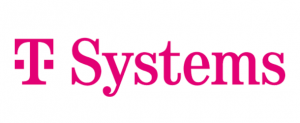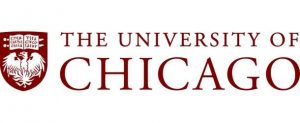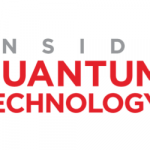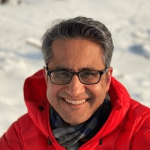Quantum News Briefs March 27: T-Systems to Offer Quantum Computing Expertise and Access to IBM Quantum Computational Resources; Experiment translates quantum information between technologies in important step for the quantum internet; Fundación Ikerbasque & IBM partner to launch quantum computational center + MORE

Quantum News Briefs March 27: T-Systems to Offer Quantum Computing Expertise and Access to IBM Quantum Computational Resources; Experiment translates quantum information between technologies in important step for the quantum internet; Fundación Ikerbasque & IBM partner to launch quantum computational center + MORE.
T-Systems to Offer Quantum Computing Expertise and Access to IBM Quantum Computational Resources
 T-Systems, a Deutsche Telekom IT subsidiary, will now have the ability to provide its customers with cloud access to IBM’s quantum systems, including multiple quantum computers powered by the 127-qubit IBM Eagle processor. Quantum News Briefs summarizes from IBM’s Newsroom.
T-Systems, a Deutsche Telekom IT subsidiary, will now have the ability to provide its customers with cloud access to IBM’s quantum systems, including multiple quantum computers powered by the 127-qubit IBM Eagle processor. Quantum News Briefs summarizes from IBM’s Newsroom.
Quantum computing aims to enable calculations that are beyond the means of even the world’s most advanced classical supercomputers. This announcement sees the Deutsche Telekom IT subsidiary embark on the path to providing access to this technology, as well as insights on how it can be applicable to its customers’ businesses. In addition, T-Systems will offer dedicated quantum know-how and training.
Customers will have access to T-Systems quantum services tailored to their needs, in a set of different customizable packages. These range from one-day introductory sessions, through to business case proofs-of-concept over several months. The use of IBM Quantum computational resources over the cloud — including Qiskit Runtime, which allows for the optimization and efficient execution of workloads on quantum systems at scale — together with T-Systems’ services, will lower the barrier to quantum computing. This will allow T-Systems to develop and test customers’ use-cases and prepare them for a future with quantum computing. T-Systems aims to host its own quantum infrastructure in the future, assisted by IBM.
“Quantum computing will be central to tomorrow’s IT landscape. We are combining quantum and classical computing in a seamless and scalable customer experience.” states Adel Al-Saleh, Deutsche Telekom board member and Chief Executive of T-Systems. “Taking these first decisive steps will lower the access barrier to quantum computing.” IBM has an established track record in quantum computing leadership. The company offers the world’s largest fleet of quantum computers, accessible over the cloud. Al-Saleh continues: “In IBM, we have a trusted partner to deliver this future technology. It is a perfect match for our industry focus and expertise.” Click here to read announcement in-entirety.
Experiment translates quantum information between technologies in important step for the quantum internet
 Researchers have discovered a way to “translate” quantum information between different kinds of quantum technologies, with significant implications for quantum computing, communication, and networking.
Researchers have discovered a way to “translate” quantum information between different kinds of quantum technologies, with significant implications for quantum computing, communication, and networking.
“A lot of the technologies that we use for classical communication—cell phones, Wi-Fi, GPS and things like that—all use microwave frequencies of light,” said Aishwarya Kumar, a postdoc at the James Franck Institute at University of Chicago and lead author on the paper. “But you can’t do that for quantum communication because the quantum information you need is in a single photon. And at microwave frequencies, that information will get buried in thermal noise.”
The solution is to transfer the quantum information to a higher-frequencyoptical photon, which is much more resilient against ambient noise. Some experiments design solid state devices for this purpose, but Kumar’s experiment aimed for something more fundamental: atoms.
Rubidium atoms happen to have two gaps in their levels that Kumar’s technology exploits: one that exactly equals the energy of a microwave photon, and one that exactly equals the energy of an optical photon. By using “transduction”, lasers to shift the atom’s electron energies up and down, the technology allows the atom to absorb a microwave photon with quantum information and then emit an optical photon with that quantum information.
The technology works both ways: it can transfer quantum information from microwave photons to optical photons, and vice versa. So it can be on either side of a long-distance connection between two superconducting qubit quantum computers, and serve as a fundamental building block to a quantum internet.
But Kumar thinks there may be a lot more applications for this technology than just quantum networking. Its core ability is to strongly entangle atoms and photons—an essential, and difficult task in many different quantum technologies across the field.
“One of the things that we’re really excited about is the ability of this platform to generate really efficient entanglement,” he said. “Entanglement is central to almost everything quantum that we care about, from computing to simulations to metrology and atomic clocks. I’m excited to see what else we can do.” Click here to read original article in Phys.org.
Fundación Ikerbasque & IBM partner to launch quantum computational center
 Fundación Ikerbasque, the Basque Foundation for Science in the Basque Country of Spain, and IBM today presented details of how they are partnering to further establish the Basque Country as a leading technology hub. This includes the adoption of quantum computing through the launch of the IBM-Euskadi Quantum Computational Center, which will provide Qiskit Runtime services from a 127-qubit IBM Quantum System One located in San Sebastian and managed by IBM.
Fundación Ikerbasque, the Basque Foundation for Science in the Basque Country of Spain, and IBM today presented details of how they are partnering to further establish the Basque Country as a leading technology hub. This includes the adoption of quantum computing through the launch of the IBM-Euskadi Quantum Computational Center, which will provide Qiskit Runtime services from a 127-qubit IBM Quantum System One located in San Sebastian and managed by IBM.
IBM and IkerBasque share a common mission on the role of quantum computing as a key element of the Basque Country Government’s Ikur 2030 vision for quantum technologies. This initiative aims to advance quantum research, build a quantum workforce, promote economic development, and provide the necessary quantum computing infrastructure to achieve those goals. The IBM-Euskadi Quantum Computational Center will promote the use of advanced technology across all the Basque Country Government and the General Deputations (Araba, Bizkaia and Gipuzkoa), further elevating research institutions by expanding international research collaborations, performing world-class fundamental scientific research, and increasing the quantum-trained talent in the region.
To achieve these goals, the new IBM-Euskadi Quantum Computational Center will focus on collaborations in crucial areas such as materials research, to develop a world-class, leading quantum ecosystem in Southern Europe that will leverage the strengths of its provinces to drive the advancement of science and technology.
This IBM-Euskadi Quantum Computational Center will provide computational infrastructure for researchers from Ikerbasque Foundation and its partners to help researchers meet these goals. Researchers will be able to run quantum programs to explore complex problems, including the modeling of new materials and how quantum computing can be used as part of broader sustainability efforts. The IBM Qiskit Runtime services made available via this collaboration will leverage an IBM Quantum System One to be deployed at the Ikerbasque building located in San Sebastian (Guipuzkoa – Spain). This new center represents a further step in promoting technology development in the region to expand the horizons of computation. Click here to read news announcement in-entirety.
New tool disentangles the electronic states layer-by-layer in quantum materials
 A new tool developed by researchers at the Pritzker School of Molecular Engineering (PME) can help reveal the origin of electronic states in designed materials—a step toward harnessing the materials for future quantum technology applications. Quantum News Briefs summarizes from March 23 U of Chicago News.
A new tool developed by researchers at the Pritzker School of Molecular Engineering (PME) can help reveal the origin of electronic states in designed materials—a step toward harnessing the materials for future quantum technology applications. Quantum News Briefs summarizes from March 23 U of Chicago News.
The tool, developed by Asst. Prof. Shuolong Yang and his team, will help researchers better understand magnetic topological insulators: materials with special surface features that could make them integral to quantum information science technologies.
Through a technique called layer-encoded frequency-domain photoemission, researchers send two laser pulses into a layered material. The resulting vibrations, coupled with the measurement of energy, allows researchers to piece together a “movie” that shows how electrons move in each layer.
“In our daily life, when we want to better understand a material — to understand its composition or if it’s hollow — we knock on it,” Yang said. “This is a similar approach at a microscopic level. Our new technique allows us to ‘knock and listen’ to layered materials, and it allowed us to show that one particular magnetic topological insulator works differently than theory predicts.”
The results were published in Nature Physics.
Understanding layered materials is important because many materials scientists now design and create materials at the atomic level in a layer-by-layer process, combining two or more materials together to create a new material. Building these materials from the ground up allows them to create materials with new properties for future technologies.
When scientists created the two-layered magnetic topological insulator (MnBi2Te4)(Bi2Te3) by combining a magnetic material with a non-magnetic material, they developed a material with exotic quantum properties.
Because these layers are so thin, traditional material characterization tools can’t distinguish between the layers. While the electrons should ideally be moving around the surface of the magnetic material, previous experiments done by other groups showed that perhaps they instead zip around the non-magnetic material. Click here to read article article in-entirety.
Sandra K. Helsel, Ph.D. has been researching and reporting on frontier technologies since 1990. She has her Ph.D. from the University of Arizona.























